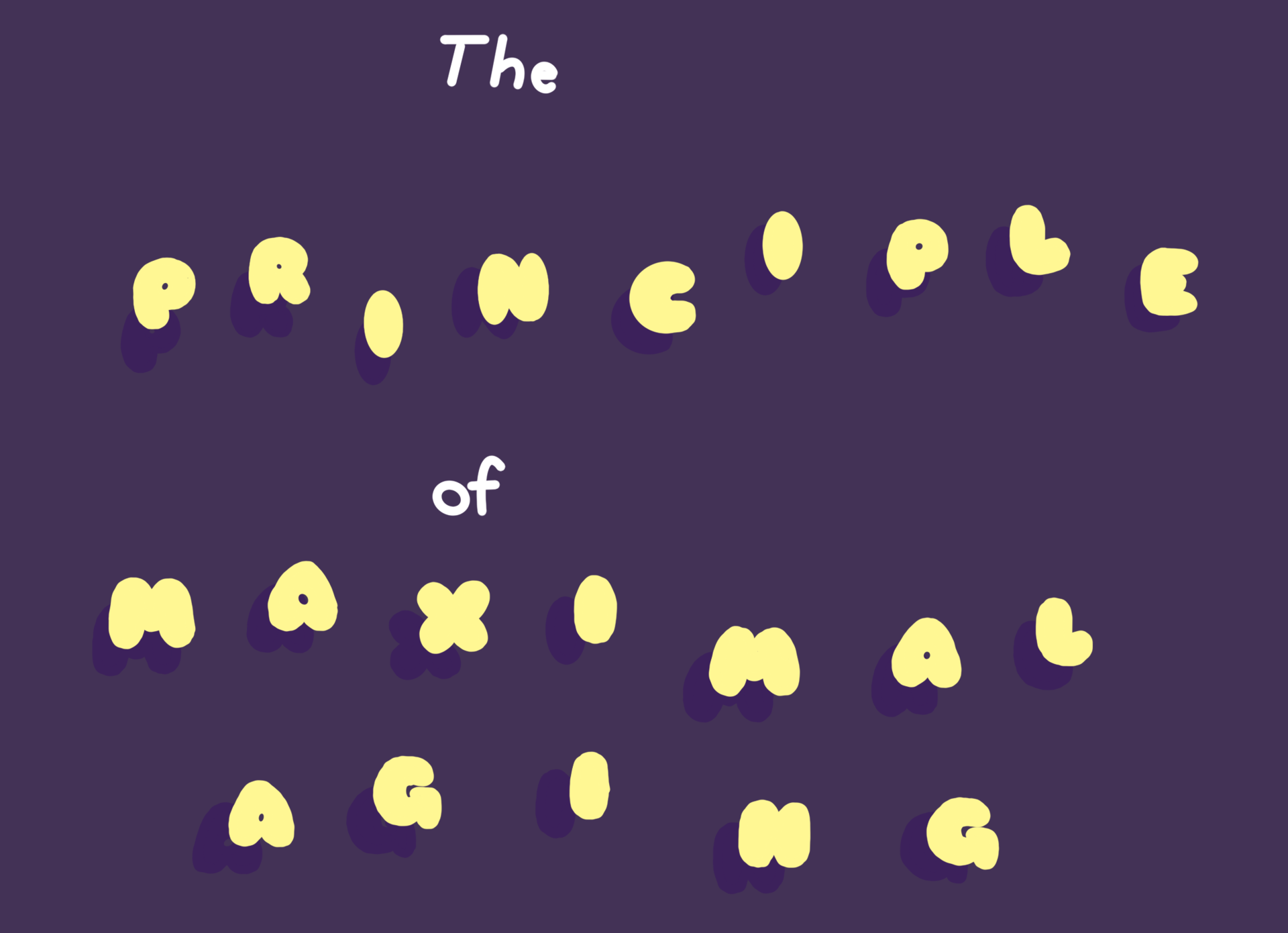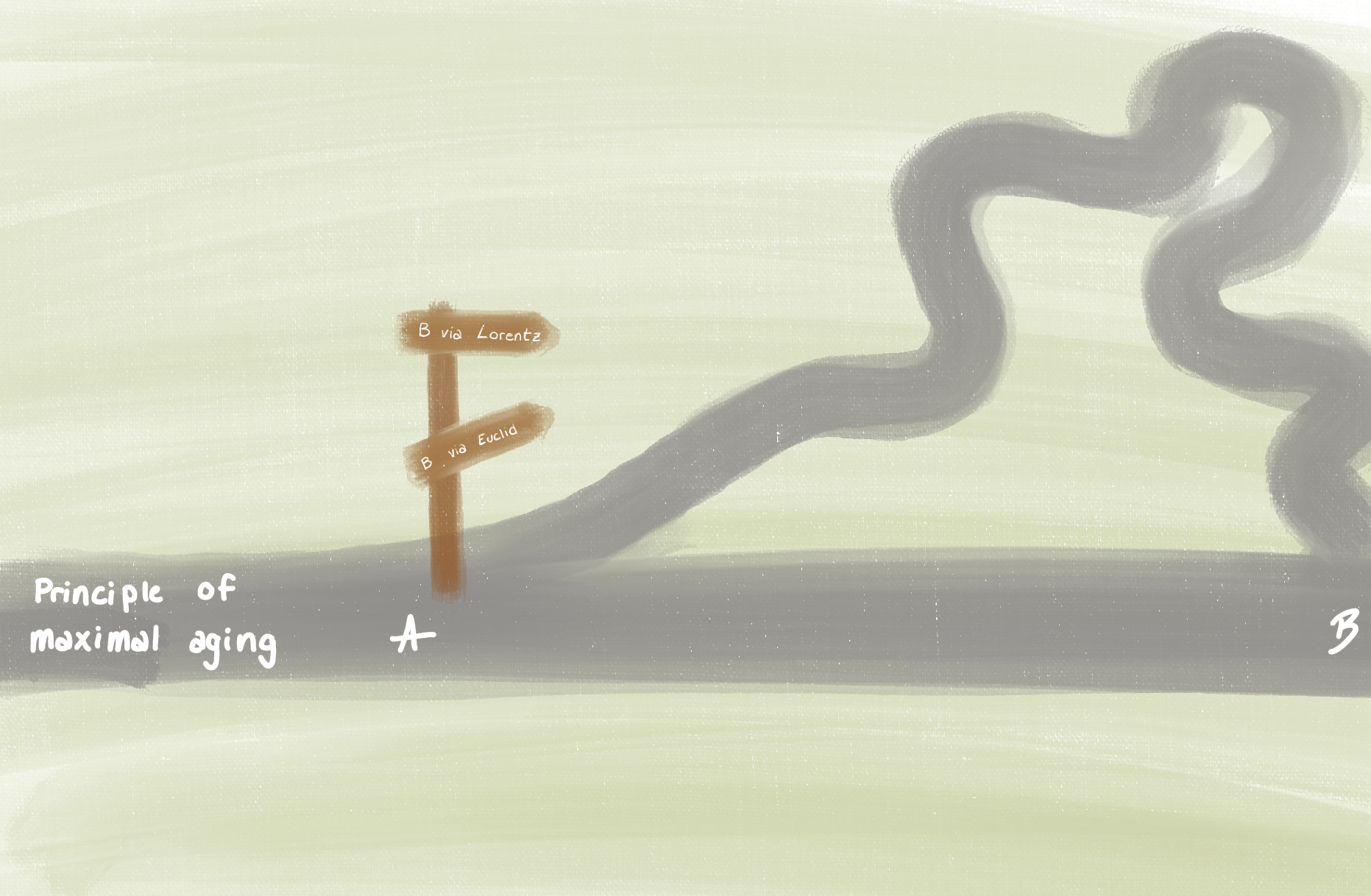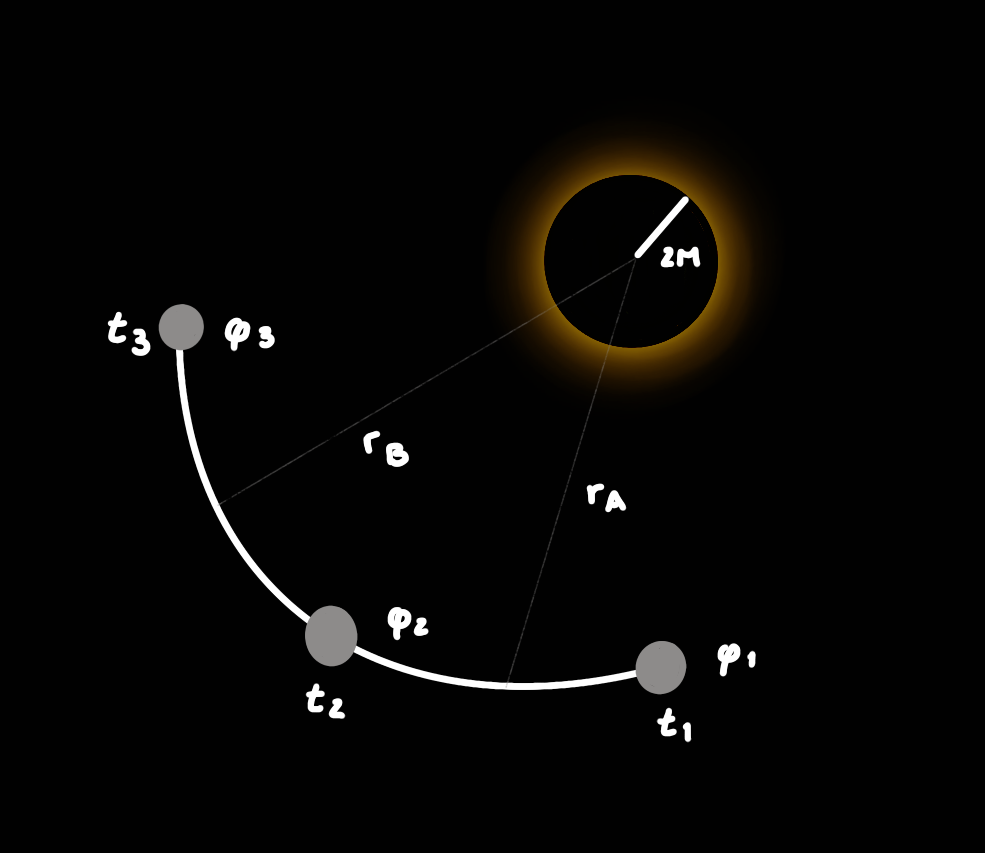Previously I mentioned something along the line of longest paths from A to B in different geometries. It seems like I just brought it up as a funny example, but there is more to it actually. What does the longest path look like in Euclidean, Lorentz and Schwarzschild geometry? What even is "longest path"?
Introducing:

Karl: So the opposite of anti aging products?
Rebecca: Uhhhmm...
This is a math-free post! It will be filled with happiness, colours, figures and sparkles! (Okey, maybe not all of that. I don't know how to draw sparkles...)
The principle of maximal aging, valid and fundamental in both special and general relativity, states a particle in free float (without influence from external forces) will choose the wordline which corresponds to the longest possible time intervals between two events.

Walking from A to B in the longest possible time via. Euclidean geometry, is just to take an absurd route which makes you walk in circles, back and fourth. However, the longest possible route via. Lorentz geometry is a straight line. Which doesn't seem intuitive for us at all...
Now what about prinicple of maximal aging in Scwarzschild geometry? Is it as confusing? Hmmm... we'll give it a shot.

We are interested in studying the motion of this... grey ball? The distance from t1 to t3 can be described using Schwarzschild line element, which describes how distances are measured. The reason we use Schwarzschild geometry is because we are positioned near a spheric object.
How could we apply the principle of maximal aging to a Schwarzschild line element? We know the principle corresponds to a worldline with the longest possible time interval between two events. Therefore we need to find the path which maximizes the total time on the grey ball's wristwatch. That would be equivalent to finding the maximum derivative of the Schwarzschild line element (finding the derivative of the Schwarzschild line element and derive an expression for when the derivative equals 0).

Luckily I won't be dragging you through the math mess. Feel free to do it yourself, though.
From this we have an interesting result. The relation between the angle, radius of the path and proper time... wait too confusing. Let me try one more time. The angular momentum (measured from the grey ball's wristwatch) proportional to the radius of the path squared IS A CONSERVED QUANTITY.
Karl: Uhmm and soo?
Rebecca: Well if the path had a much larger radius, the angular momentum must be smaller in order for the quantity to be conserved!
Karl: Wait, so the principle of maximal aging for a Schwarzschild line element is related to angular momentum?
Rebecca: I think so!
Experiment to do at home:
1. Sit on a chair (which spins)
2. Bring your arms straight out horizontally
3. Spin around the chair
4. Bring your arms in
Notice how you started spinning faster when you brought your arms in closer? Higher angular momentum compensates for a decreased radius.
We've spoiled it already. The conserved quantity we just found is exactly the same angular momentum vector h in celestial mechanics. The vector is literally defined as angular momentum per mass! (in the limit where velocities are small)
TLDR; The principle of maximal aging applied to the Schwarzschild line element gives us the expression of angular momentum per mass.